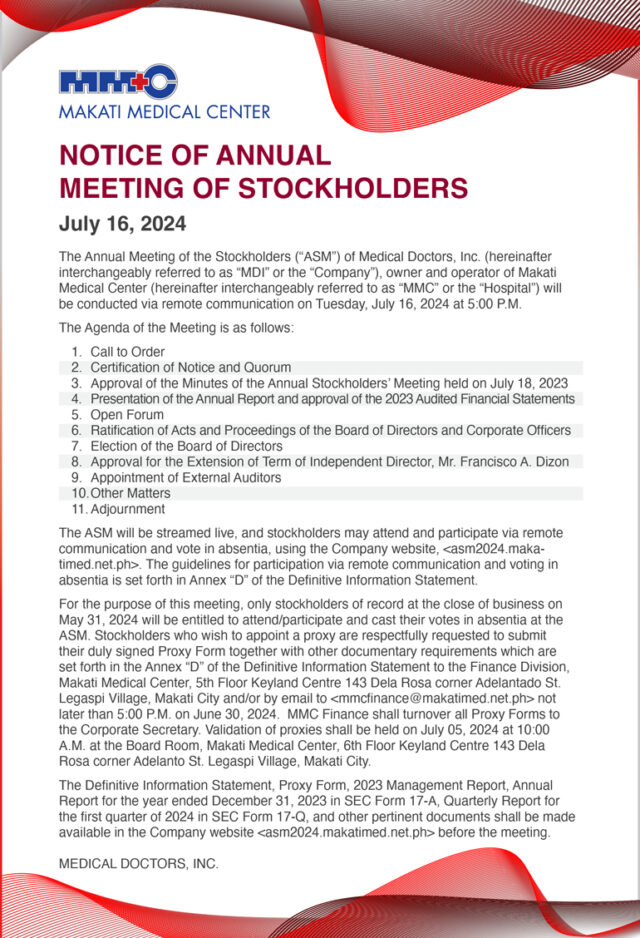President Ferdinand R. Marcos, Jr. asked the Armed Forces of the Philippines to prepare as the country faces growing risks arising from Chinese aggression in the Taiwan Strait. “The external threat now has become more worrisome. And that is why we have to prepare (for any eventuality),” he said.
Emerging threats have compelled him to make Cagayan, a province facing Taiwan, a site under a Philippine Enhanced Defense Cooperation Agreement (EDCA) with the United States. Robin Michael U. Garcia, a political economy professor at the University of Asia and the Pacific, said China’s aggression in the Taiwan Strait should be a major defense issue because the escalation of armed conflict between China and Taiwan could spill over to Luzon. Taiwan is just over 300 kilometers away from Batanes, the northernmost province of Luzon.
The President should also tell the National Security Council to be vigilant about the covert entry of elements of foreign armed forces and their auxiliary intelligence operatives into the country. Authorities found a total of 18 sets of Chinese military uniforms at the raided Philippine Offshore Gaming Operator (POGO) hub in Porac, Pampanga.
POGOs
Senator Sherwin Gatchalian said the sets of People’s Liberation Army uniforms and some military pins discovered are a clear evidence that POGOs are a national security threat to our nation. “It has opened the doors, not only to criminal syndicates, but also to those who want to destabilize and infiltrate our governmental and political institutions. This is another reason why the administration should no longer allow them to operate in our country,” he told reporters.
Senator Risa Hontiveros said the implications of these uniforms should send chills down Filipinos’ spine. The discovery of these uniforms only proves the information shared by intelligence agencies that there are credible links between POGOs and foreign intelligence assets, she said. “It is so clear that every POGO has exploited our economic vulnerabilities and that POGOs have now evolved into a breeding ground for crime and a national security threat.”
On the other hand, Senator Robin Padilla said the discovery of such clothing means there is a “clear and present danger” to Filipinos. This prompted Padilla to renew his call for strengthened law enforcement at the local level.
It is interesting what former Interior and Local Government Secretary Rafael Alunan III wrote in Capiz News in October last year. He wrote: “On Oct. 16, 2023, the National Bureau of Investigation (NBI) raided a house in Valle Verde 5 in Pasig. Arrested and detained were six Chinese nationals and their two Filipino security personnel. Taken from them were high-powered firearms and ammunition marked with “From People’s Republic of China,” as well as badges designating roles such as “blasting team,” “recon team,” “support team,” “assault team,” “machine gun team” and “sniper team.””
Valle Verde V is about a 15-minute ride from Camp Aguinaldo — the general headquarters of the Armed Forces of the Philippines — and Camp Crame, the national headquarters of the Philippine National Police. As Mr. Alunan wrote, the signs of “China’s malevolent intentions” are clear.
At their peak, POGOs hired more than 300,000 Chinese workers. According to official estimates, POGO workers legally staying in the Philippines number between 100,000 and 150,000. That most of them are in their 20s and are of athletic build has led many observers to suspect they are soldiers in disguise as POGO workers.
However, National Security Adviser Eduardo Año said the existence of POGO sites in the country does not yet constitute a “national security threat” that would need military involvement. “We do not view POGOs per se as a national security threat at the level that would necessitate the direct involvement of defense forces,” Año said. “At the moment, it is a national concern that law enforcement and regulatory agencies can address.”
CHINESE STUDENTS
The reported influx of Chinese students into a Philippine province close to what is regarded as a militarily sensitive area raised another public furor. That there were more than 4,000 Chinese students at universities in Cagayan province in Northern Luzon facing Taiwan sounded alarms of a national security threat.
Cagayan Rep. Joseph Lara and Isabela Rep. Faustino Dy V noted “an alarming increase in the number of Chinese citizens coming into the province of Cagayan, where another EDCA site is situated, as students enrolled in universities.” The province now hosts two military bases that can be used by US troops in the Philippines. Rep. Lara said the number of Chinese nationals in the province has become “highly suspicious and alarming.”
Referring to tensions in Philippine territorial waters in the South China Sea, he said: “[With] the prevailing situation in the West Philippine Sea and in view of Cagayan’s strategic geographical location, the increasing number of Chinese students in the province poses a serious concern to the national security of the Philippines.”
However, universities and higher education officials were quick to play down the issue. The number of students is still unclear. Reports received only show more than 400 Chinese nationals are on site because the school is said to be implementing distance learning,
While Rep. Lara referred to over 4,000 Chinese students, the Bureau of Immigration said a total of 1,516 Chinese students in Cagayan were granted student visas in 2023. The bureau added that the Chinese nationals were “legally processed” and had “complete documentation.”
The Philippine Inter-Agency Committee on Foreign Students, which includes officials from the Bureau of Immigration, Department of Foreign Affairs, Philippine National Police, National Bureau of Investigation and National Intelligence Coordinating Agency, will hold a special meeting this week, outside its regular schedule of meetings, to discuss the reported influx of Chinese students in Cagayan province.
Jonathan Malaya, assistant director-general of the Philippine National Security Council, said a team had been dispatched to the capital of Cagayan. “Our intelligence units have been assigned to take a look at the situation there. Is this a case of a national security threat, or is this just a case of people wanting to study in the Philippines?” Malaya said.
AFP spokesperson Colonel Francel Margareth Padilla said last week the AFP was looking into the “national security implications” of the reported surge of Chinese students in Cagayan. Dana Sandoval, the spokesperson for the Bureau of Immigration, told local media it is “only right” for intelligence agencies to verify the concerns because it is a security area, though legitimate foreign nationals who want to study in the Philippines should not be denied entry, she said, referring to the need to maintain a balance.
The Philippines Commission for Higher Education (CHED) said in a statement on April 18 that a significant number of Chinese students were enrolled at Saint Paul University Philippines — Tuguegarao City in Cagayan. The university was granted autonomous status by CHED in 2002 and has the authority, granted by the Bureau of Immigration, to accept foreign students — the only higher education institution in Cagayan with this authority.
According to the university’s website, it is a center for excellence in nursing and teacher education and is a center for development in information technology. CHED noted: “The foreign students are attracted by the affordable cost of quality education, the use of English as a medium of instruction and the globally recognized quality of instruction in such fields as medicine, dentistry, optometry, physical therapy, public health and engineering.”
The foreign student enrollment at Saint Paul in Tuguegarao City was 486 graduate students as of April 17, 2024. They consist of various nationalities — Americans, Chinese, Indonesians, Japanese and Vietnamese. Other institutions in Cagayan do not have foreign students.
WORLD WAR II LESSONS
Years before the outbreak of war in the Pacific region, imperial Japanese soldiers in disguise steadily infiltrated the country as traders, laborers even street sweepers. But when Japanese war planes attacked the US Naval Base in Pearl Harbor and the US military camps in the Philippines on Dec. 8, 1941, the Japanese infiltrators immediately wore their military uniforms, to the great surprise of their Filipino neighbors and friends.
The Japanese who planned the attack on Pearl Harbor was Admiral Isoroku Yamamoto, who studied at Harvard University and served as Japan’s naval attaché in Washington. But the real espionage work on Pearl Harbor was done by Takeo Yoshikawa.
Here is the story of the “Japanese spy in Hawaii before the attack on Pearl Harbor.” Yoshikawa was a 1933 graduate of the ImperiaI Japanese Naval Academy at Etajima, graduating at the top of his class. A year later, he began a career in Naval intelligence, being assigned to the Navy Headquarters in Tokyo. He became an expert on the US Navy, perusing every source he could possibly get his hands on. In 1940, he became a junior diplomat after passing the English examinations.
Because of his expertise on the US Navy, Yoshikawa was sent to Hawaii posing as a vice-consul named Tadashi Morimura. He rented a second-story apartment that overlooked Pearl Harbor and would often wander around the island of Oahu, taking notes on fleet movements and security measures. He rented small airplanes at John Rodgers Airport and flew around, observing US installations. He also dove under the harbor using a hollow reed as a breathing device. He gathered information by taking the Navy’s own harbor tugboat and listening to local gossip.
How many “Isoroku Yamamotos” are there among students in Philippine universities? How many “Takeo Yoshikawas” are there among POGO workers?
Will we let our World War II history repeat itself?
Oscar P. Lagman, Jr. is a retired corporate executive, business consultant and management professor.












